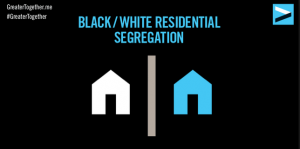Residential Segregation Rising?
< < Go Back
In “The National Rise in Residential Segregation“, Trevon Logan and John Parman introduce a first-of-its-kind measure of residential segregation based upon the racial similarity of next-door neighbors.
The authors find that residential segregation in the United States doubled from 1880 to 1940. The findings show that the likelihood of having opposite-race neighbors declined precipitously in every region. The rise in segregation occurred in areas with small black population shares, areas with large black population shares, areas that experienced net inflows of black residents, areas that experienced net outflows of black residents, urban areas with large populations and rural areas with smaller populations.
The authors, therefore, conclude that the traditional story of increasing segregation in urban areas in response to black migration to urban centers is incomplete, and must be augmented with a discussion of the increasing racial segregation of rural areas and other areas that lost black residents.
Traditional explanations for increased segregation have included:
– Blacks clustering in small areas abutting white communities;
– The use of restrictive covenants on residential housing;
– The presence of large manufacturing firms which employed blacks;
– And existing differences in transportation infrastructure.
Logan and Parman suggest that the national rise in segregation over the first half of the 20th century opens new lines of inquiry. Understanding the relationship between segregation, urbanization and population flows should help to explain the dynamics of segregation in cities and rural communities. These links have important implications for the skill mix of cities, public finance, education, inequality, health and other measures of social wellbeing. This gives rise to questions about the impact of Jim Crow laws, racial violence, European immigration, internal migration and the differences and similarities between racial segregation in rural and urban areas.
More From NCPA:




